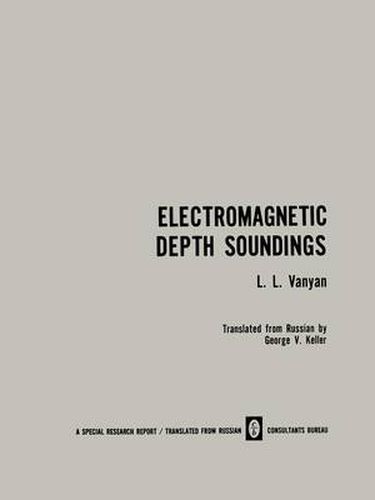Readings Newsletter
Become a Readings Member to make your shopping experience even easier.
Sign in or sign up for free!
You’re not far away from qualifying for FREE standard shipping within Australia
You’ve qualified for FREE standard shipping within Australia
The cart is loading…






This title is printed to order. This book may have been self-published. If so, we cannot guarantee the quality of the content. In the main most books will have gone through the editing process however some may not. We therefore suggest that you be aware of this before ordering this book. If in doubt check either the author or publisher’s details as we are unable to accept any returns unless they are faulty. Please contact us if you have any questions.
10.————————, 10.————————. N ::IE ~ w ~ ‘
'0.1 ~ 0 M z SIDE VIEW PLAN VIEW 0.01 LI –’—‘—LLL-’—LLLlI ~-L— —LLL..ll..L.LJ’-‘:’;;‘ 0.01 1 100 10 100 fr Fig. 1. The behavior of the magnetic and electric fields from a vertical magnetic dipole source at the surface of the earth (after Wait [1951,1955]). earth, the experimental curve so plotted should have the same shape as a portion of the ap propriate theoretical curve, but with the ordinates and abscissas shifted by an amount dependent on the resistivity. The conductivity can be determined from the amount of shift between the field data and the theoretical curve. A detailed description of the curve matching procedure is found in a text by Keller and Frischknecht (1966). The curve matching procedure, though used, has several disadvantages. Measurements must be made over a diagnostic portion of the theoretical curve, one in which there is some curvature, so that the amount of shift required to make a match can be determined uniquely. This means that the approximate conductivity of the earth must be known when measurements are made. Secondly, determination of a single value of conductivity requires measurements made over a wide range of frequencies. This would appear to be wasteful of data, inasmuch as the equations indicate that a single measurement at a single frequency should be enough to de termine conductivity.
$9.00 standard shipping within Australia
FREE standard shipping within Australia for orders over $100.00
Express & International shipping calculated at checkout
This title is printed to order. This book may have been self-published. If so, we cannot guarantee the quality of the content. In the main most books will have gone through the editing process however some may not. We therefore suggest that you be aware of this before ordering this book. If in doubt check either the author or publisher’s details as we are unable to accept any returns unless they are faulty. Please contact us if you have any questions.
10.————————, 10.————————. N ::IE ~ w ~ ‘
'0.1 ~ 0 M z SIDE VIEW PLAN VIEW 0.01 LI –’—‘—LLL-’—LLLlI ~-L— —LLL..ll..L.LJ’-‘:’;;‘ 0.01 1 100 10 100 fr Fig. 1. The behavior of the magnetic and electric fields from a vertical magnetic dipole source at the surface of the earth (after Wait [1951,1955]). earth, the experimental curve so plotted should have the same shape as a portion of the ap propriate theoretical curve, but with the ordinates and abscissas shifted by an amount dependent on the resistivity. The conductivity can be determined from the amount of shift between the field data and the theoretical curve. A detailed description of the curve matching procedure is found in a text by Keller and Frischknecht (1966). The curve matching procedure, though used, has several disadvantages. Measurements must be made over a diagnostic portion of the theoretical curve, one in which there is some curvature, so that the amount of shift required to make a match can be determined uniquely. This means that the approximate conductivity of the earth must be known when measurements are made. Secondly, determination of a single value of conductivity requires measurements made over a wide range of frequencies. This would appear to be wasteful of data, inasmuch as the equations indicate that a single measurement at a single frequency should be enough to de termine conductivity.